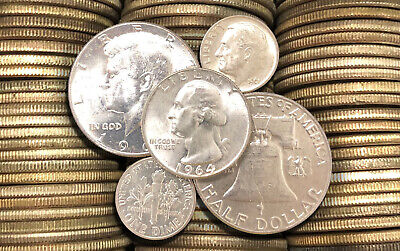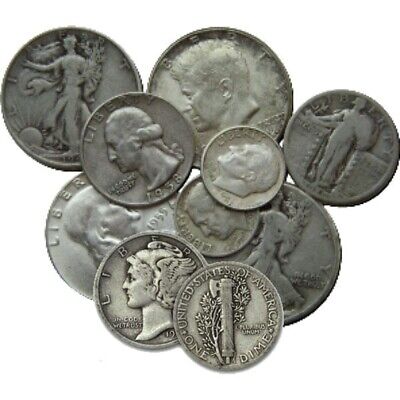Junk silver coins are an intriguing aspect of American numismatic history, offering collectors and investors a tangible connection to the past. These coins, primarily minted for circulation until the mid-20th century, contain significant silver, making them valuable for their historical and metal content. This article delves into junk silver coins’ history, characteristics, and value, providing a comprehensive overview for novice and seasoned numismatists.
What Are Junk Silver Coins?
The term “junk silver” is somewhat of a misnomer, as it refers not to the condition of the coins but to their metal content. Junk silver coins are U.S. coins minted before 1965 that contain 90% silver. They are called “junk” because they have no collectible or numismatic value beyond their silver bullion content. These coins include dimes, quarters, half dollars, and dollars. Despite their name, they are far from worthless, as their silver content makes them desirable.
Silver has been a staple in coinage for centuries due to its durability, luster, and intrinsic value. In the United States, silver coins have been a part of everyday commerce since the nation’s founding. However, the use of silver in coins began to wane in the mid-20th century due to various economic factors, including the rising cost of silver and changes in monetary policy.
The Coinage Act of 1965 marked a significant turning point in U.S. currency. This legislation ended the use of silver in minting dimes and quarters and reduced the silver content to half a dollar. The decision was driven by the increasing scarcity of silver and the need to produce more coins for a growing economy without exacerbating the shortage.
Types of Junk Silver Coins

- Silver Dimes: The most common junk silver dimes are the Mercury Dime (1916–1945) and the Roosevelt Dime (1946–1964).
- Silver Quarters: The Washington Quarter (1932–1964) is the primary silver quarter in circulation before the switch to a copper-nickel-clad composition.
- Silver Half Dollars: The Walking Liberty Half Dollar (1916–1947), Franklin Half Dollar (1948–1963), and Kennedy Half Dollar (1964) are key examples.
- Silver Dollars: Though not as commonly referred to as junk silver, the Morgan Dollar (1878–1921) and Peace Dollar (1921–1935) are notable for their 90% silver content.
The Value of Junk Silver Coins
The value of junk silver coins is primarily determined by their silver content, which is why they are often sought after by investors seeking a hedge against inflation. The market value of these coins fluctuates with the price of silver, which can be tracked through various financial news sources and commodity exchanges.
To calculate the silver value of a junk silver coin, one needs to know the current spot price of silver and the coin’s silver weight. Typically, a dollar face value of 90% silver coins (e.g., four quarters, ten dimes, or two half dollars) contains approximately 0.715 troy ounces of pure silver.
Recognizing Junk Silver Coins
Identifying junk silver coins is straightforward once you know what to look for. Coins dated 1964 and earlier are generally 90% silver, except for the Kennedy Half Dollar, which contained silver until 1970, albeit at a reduced 40% purity from 1965 onward. A simple date check is often sufficient for those new to collecting or investing in junk silver.
Table: Common Junk Silver Coins and Their Silver Content
| Coin Type | Years Minted | Silver Content (Troy Ounces) | Melt Value |
|---|---|---|---|
| Mercury Dime | 1916–1945 | 0.0723 | $5.47 |
| Roosevelt Dime | 1946–1964 | 0.0723 | $5.47 |
| Washington Quarter | 1932–1964 | 0.1808 | $13.68 |
| Walking Liberty Half Dollar | 1916–1947 | 0.3617 | $27.38 |
| Franklin Half Dollar | 1948–1963 | 0.3617 | $27.38 |
| Kennedy Half Dollar | 1964 | 0.3617 | $27.38 |
Conclusion
Junk silver coins remain valuable for collectors and investors, bridging the gap between numismatic interest and tangible wealth storage. While their primary appeal lies in their silver content, these coins also offer a glimpse into the rich history of U.S. currency. As silver prices fluctuate and economic conditions evolve, the role of junk silver coins in American numismatics and investment portfolios continues to be significant.
Understanding the history and value of these coins can enhance one’s appreciation for them, whether you’re a history enthusiast, a seasoned collector, or an investor looking to diversify your portfolio with tangible assets.
